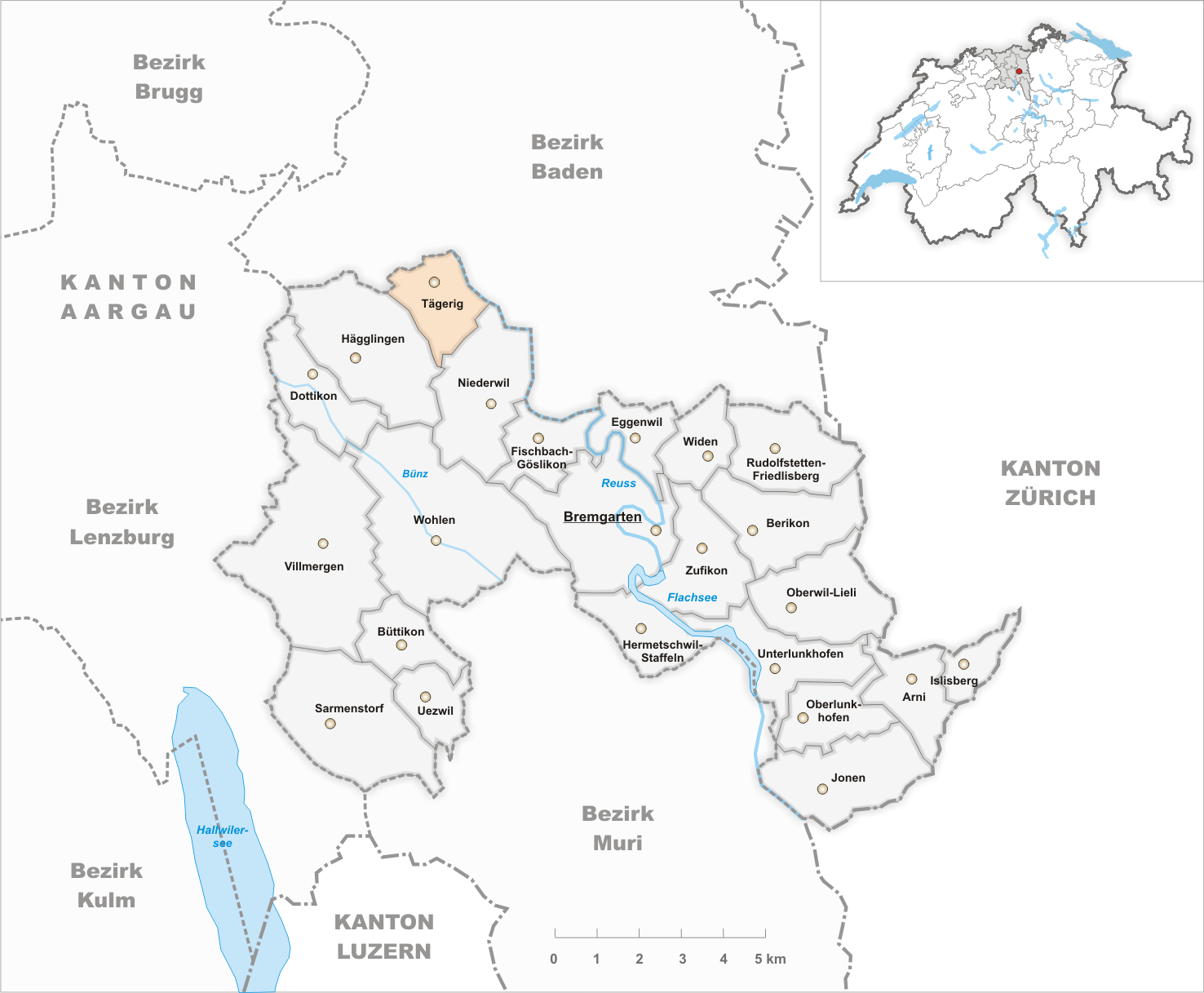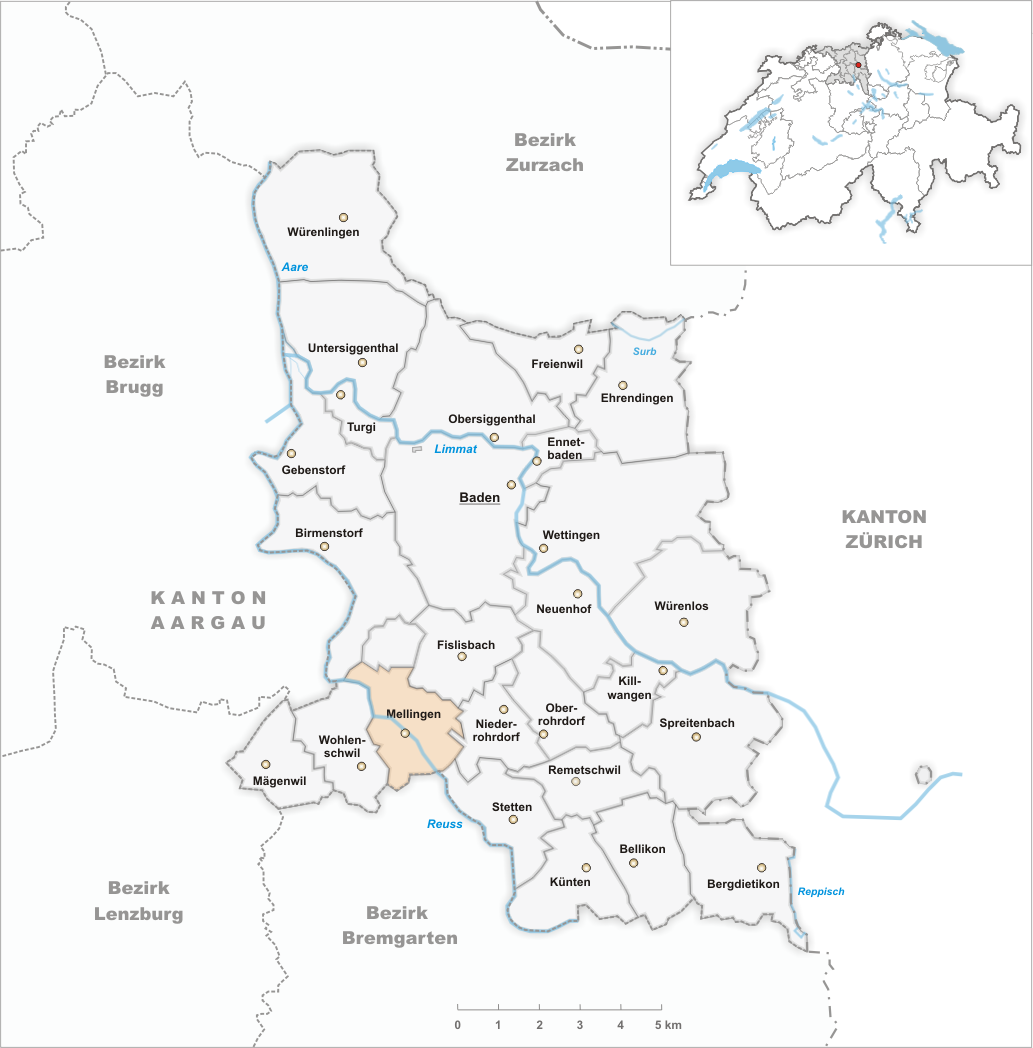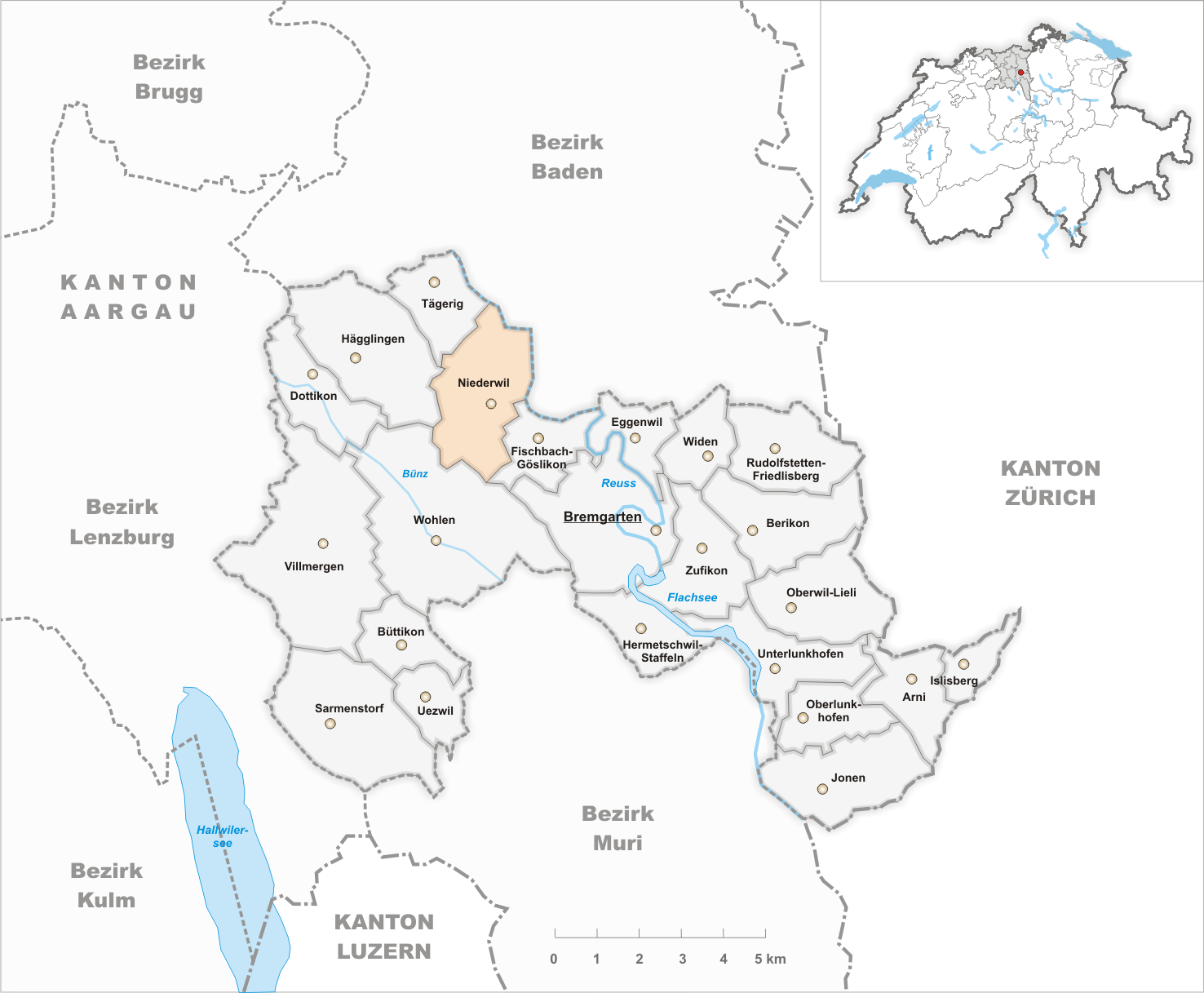|
Tägerig
Tägerig is a municipality in the district of Bremgarten in the canton of Aargau in Switzerland. History A number of shaped flints have been found north of the modern village, indicating that the area was inhabited before written records. The first mention of the modern village is in the 12th Century when it was mentioned as ''Tegrank''. In 1189 it was mentioned as ''Tegeranc''. The ''Twingherrschaft'' region (which included Tägerig) was a Habsburg fief in the 14th Century, and was granted to the Knights of Rüssegg. In 1350 it went to the Freiherren of Wohlen, then in 1409 to Segesser of Brunegg and in 1543 to the City of Mellingen. Tägerig initially belonged to the parish church of Niederwil. In 1669 a branch chapel was dedicated. After the devastating fire of 1838, a new church was built in 1846 and was made in 1864 into a separate parish. Besides agriculture, in the 18th Century the straw plaiting industry was of major importance in the village. As this indu ... [...More Info...] [...Related Items...] OR: [Wikipedia] [Google] [Baidu] |
Bremgarten (district)
Bremgarten District is a Swiss district in the Canton of Aargau, corresponding to the valleys of the Reuss and Bünz rivers in the area known as the ''Freiamt''. Geography Bremgarten District has an area, , of . Of this area, 48.7% is used for agricultural purposes, while 30.9% is forested. The rest of the land, (18.1%) is settled. Demographics Bremgarten District has a population of (as of ). , there were 2,402 homes with 1 or 2 persons in the household, 11,781 homes with 3 or 4 persons in the household, and 9,773 homes with 5 or more persons in the household. The average number of people per household was 2.43 individuals. there were 10,969 single family homes (or 37.2% of the total) out of a total of 29,488 homes and apartments.Statistical Department of Canton Aargau accessed 20 January 2010 There were a total of 479 em ... [...More Info...] [...Related Items...] OR: [Wikipedia] [Google] [Baidu] |
Mellingen
Mellingen is a historic town and a municipality in the district of Baden in the canton of Aargau in Switzerland. The town is located on the Reuss. History Mellingen is first mentioned in 1045 as ''Mellingen'' though this comes from a 16th-century copy of the original. Around 1217–39 it was mentioned as ''Menelingen''. Geography Mellingen has an area, , of . Of this area, 36.2% is used for agricultural purposes, while 32.4% is forested. Of the rest of the land, 26.7% is settled (buildings or roads) and the remainder (4.8%) is non-productive (rivers or lakes). The municipality is located in the Baden district. The compact, walled medieval city center straddles the river Reuss. The old city is surrounded by a number of newer settlements. It has grown into a center of the small ''Unteres Reusstal'' region. Coat of arms The blazon of the municipal coat of arms is ''"Or a Lion rampant Gules and in chief of the last a Bar uletArgent."'' Demographics Mellingen has a population ... [...More Info...] [...Related Items...] OR: [Wikipedia] [Google] [Baidu] |
Niederwil, Aargau
Niederwil is a municipality in the district of Bremgarten in the canton of Aargau in Switzerland. History The first traces of human settlement near Niederwil are several scattered neolithic stones axes. During the Roman era, there was a small settlement. Near the church is the ruins of a Roman era wall, and there was a Roman treasury at what is now ''Riedmatte''. An iron spearhead from the 7th Century was discovered in the municipality, but all details of the discovery have been lost. The village of Niederwil is first mentioned in 924 as ''Wilare''. The rights to high justice were held throughout the High and Late Middle Ages by the Counts of Lenzburg. Following their extinction, the rights were held by the House of Habsburg, and after the 1415 conquest of Aargau, they were held by the Old Swiss Confederation. The rights to low justice were held by Schänis Abbey in Gaster. Geography Niederwil has an area, , of . Of this area, 53% is used for agricultural purposes, ... [...More Info...] [...Related Items...] OR: [Wikipedia] [Google] [Baidu] |
Stetten, Aargau
Stetten is a municipality in the district of Baden in the canton of Aargau in Switzerland. Geography Stetten has an area, , of . Of this area, 50.2% is used for agricultural purposes, while 27.7% is forested. Of the rest of the land, 16.7% is settled (buildings or roads) and the remainder (5.4%) is non-productive (rivers or lakes). Coat of arms The blazon of the municipal coat of arms is ''Gules a Cross Lorraine pattee fitchy patonce Argent and in chief two Mullets of Five of the same.'' Demographics Stetten has a population (as of ) of . , 18.8% of the population was made up of foreign nationals.Statistical Department of Canton Aargau -Bereich 01 -Bevölkerung accessed 20 January 2010 Over the last 10 years the population has decreased at a rate of -0.6%. Most of the population () speaks German ... [...More Info...] [...Related Items...] OR: [Wikipedia] [Google] [Baidu] |
Wohlenschwil
Wohlenschwil is a municipality in the district of Baden in the canton of Aargau in Switzerland. History On June 3, 1653 Wohlenschwil was the site of the Battle of Wohlenschwil, which ended the Swiss peasant war of 1653. Despite a peace treaty which had been signed between the peasants and the city of Bern, on May 30, 1653, Zürich assembled an army under the command of Conrad Werdmüller with the task to break any armed resistance once and for all times. Some 8,000 men with 800 horses and 18 cannonsStüssi-Lauterburg, J.; Luginbühl, H.; Gasser, A.; Greminger, A. (2003): ''Verachtet Herrenpossen! Verschüchet fremde Gäst!'', Verlag Merker im Effingerhof, Lenzburg; 2003. ;p. 57.Wahlen, H.; Jaggi, E. (1952): ''Der schweizerische Bauernkrieg 1653 und die seitherige Entwicklung des Bauernstandes'', Buchverlag Verbandsdruckerei, Bern, 1952. Published on the occasion of the tricentennial of the peasant war. No ISBN. In German ;p. 69. marched towards the Aargau. Already t ... [...More Info...] [...Related Items...] OR: [Wikipedia] [Google] [Baidu] |
Hägglingen
Hägglingen is a municipality in the district of Bremgarten in the canton of Aargau in Switzerland. History The first evidence of a settlement comes from barrows from the Hallstatt period. There is also evidence of small Roman era settlements. The first mention of modern Hägglingen is in 1036 when Count Ulrich von Lenzburg granted the church and farm of ''Hekelingen'' to Beromünster. In the acknowledgments of Emperor Henry III in 1045, the village of ''Hackelingen'' was mentioned. Frederick I Barbarossa acknowledged the grants to the village in 1173. The Vogtei (bailiwick) went from the Lenzburg family to the Kyburgs and then in 1273 to the Lords of Hallwyl. The high court rights were exercised by the Habsburgs until the Swiss conquered the Aargau in 1415. It was not until 1425 that Hägglingen, which was claimed by Lucerne, came under the authority of the entire Confederacy. It was first assigned to the district court of Wohlenschwil before it became an indepen ... [...More Info...] [...Related Items...] OR: [Wikipedia] [Google] [Baidu] |
Reuss (river)
The Reuss (Swiss German: ''Rüüss'') is a river in Switzerland. With a length of and a drainage basin of , it is the fourth largest river in Switzerland (after the Rhine, Aare and Rhône). The upper Reuss forms the main valley of the canton of Uri. The course of the lower Reuss runs from Lake Lucerne to the confluence with the Aare at Brugg and Windisch. The Reuss is one of the four major rivers taking their source in the Gotthard region, along with the Rhine, Ticino and Rhône. Geography Course The Gotthardreuss rises in the Gotthard massif, emerging from Lago di Lucendro (reservoir built in 1947; elevation 2,131 m) in the canton of Ticino and passing into the canton of Uri below the ''Brigghubel'' (1,898 m). The Furkareuss rises east of Furka Pass (2,429 m), early joined by the ''Blaubergbach'' (sourced by two mountain lakes on 2,649 m) and several other creeks sourced by still existing glaciers, such as ''Sidelengletscher'' (3,170 m) ... [...More Info...] [...Related Items...] OR: [Wikipedia] [Google] [Baidu] |
Hamlet (place)
A hamlet is a human settlement that is smaller than a town or village. Its size relative to a Parish (administrative division), parish can depend on the administration and region. A hamlet may be considered to be a smaller settlement or subdivision or satellite entity to a larger settlement. The word and concept of a hamlet has roots in the Anglo-Norman settlement of England, where the old French ' came to apply to small human settlements. Etymology The word comes from Anglo-Norman language, Anglo-Norman ', corresponding to Old French ', the diminutive of Old French ' meaning a little village. This, in turn, is a diminutive of Old French ', possibly borrowed from (West Germanic languages, West Germanic) Franconian languages. Compare with modern French ', Dutch language, Dutch ', Frisian languages, Frisian ', German ', Old English ' and Modern English ''home''. By country Afghanistan In Afghanistan, the counterpart of the hamlet is the Qila, qala (Dari language, Dari: ... [...More Info...] [...Related Items...] OR: [Wikipedia] [Google] [Baidu] |
Straw Plaiting
Straw plaiting is a method of manufacturing textiles by braiding straw and the industry that surrounds the craft of producing these straw manufactures. Straw is plaited to produce products including straw hats and ornaments, and the process is undertaken in a number of locations worldwide. Etymology To plait comes from late 14c., "to fold, gather in pleats," also "to braid or weave," from Old French pleir "to fold," variant of ploier, ployer "to fold, bend," from Latin plicare "to fold". Applications Straw can be plaited for a number of purposes, including: the thatching of roofs, to create a paper-making material, for ornamenting small surfaces as a "straw-mosaic", for plaiting into door and table mats, mattresses and for weaving and plaiting into light baskets and to create artificial flowers. Straw is also plaited to produce bonnets and hats. Belarus Straw weaving is an ancient folk craft of Belarus. In 2022 it was added to a UNESCO Representative List of the Inta ... [...More Info...] [...Related Items...] OR: [Wikipedia] [Google] [Baidu] |
2007 Swiss Federal Election
Elections to the Swiss Federal Assembly, the federal parliament of Switzerland, were held on Sunday, 21 October 2007. In a few cantons, a second round of the elections to the Council of States was held on 11 November, 18 November, and 25 November 2007. For the 48th legislative term of the federal parliament (2007–2011), voters in 26 cantons elected all 200 members of the National Council as well as 43 out of 46 members of the Council of States. The other three members of the Council of States for that term of service were elected at an earlier date.The date of the election of the members of the Council of States is a matter of cantonal law. 24 cantons have chosen to let the elections coincide with the federally regulated National Council elections. Two cantons are electing their members of the Council of States at an earlier date: Zug reelected its incumbents Peter Bieri and Rolf Schweiger on 29 October 2006, while Appenzell Innerrhoden elected Ivo Bischofsberger as its on ... [...More Info...] [...Related Items...] OR: [Wikipedia] [Google] [Baidu] |
Blazon
In heraldry and heraldic vexillology, a blazon is a formal description of a coat of arms, flag or similar emblem, from which the reader can reconstruct the appropriate image. The verb ''to blazon'' means to create such a description. The visual depiction of a coat of arms or flag has traditionally had considerable latitude in design, but a verbal blazon specifies the essentially distinctive elements. A coat of arms or flag is therefore primarily defined not by a picture but rather by the wording of its blazon (though in modern usage flags are often additionally and more precisely defined using geometrical specifications). ''Blazon'' is also the specialized language in which a blazon is written, and, as a verb, the act of writing such a description. ''Blazonry'' is the art, craft or practice of creating a blazon. The language employed in ''blazonry'' has its own vocabulary, grammar and syntax, which becomes essential for comprehension when blazoning a complex coat of arms. Ot ... [...More Info...] [...Related Items...] OR: [Wikipedia] [Google] [Baidu] |









